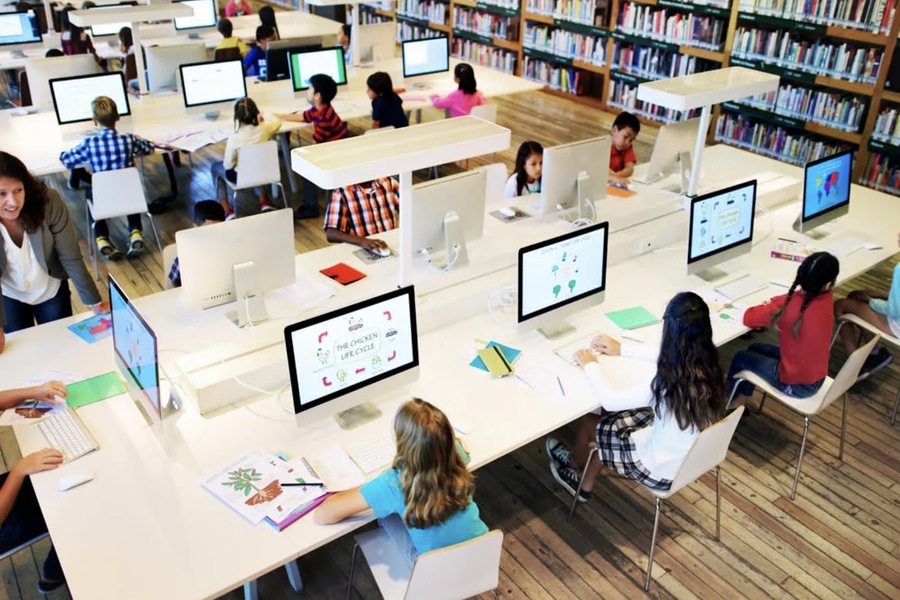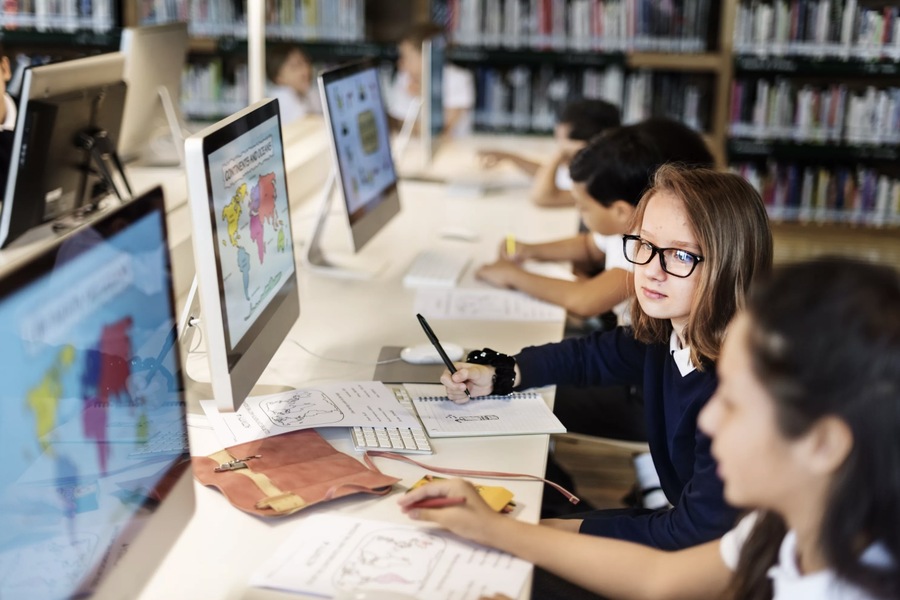In the 21st century, we find ourselves deeply immersed in what is often referred to as the “information society.” This society is characterized by the central role that information and communication technologies (ICT) play in almost every facet of life. From commerce and communication to education and entertainment, ICT has revolutionized how we access, process, and share information. The creation of a qualitatively new information environment has opened unprecedented avenues for human creativity, scientific and technological progress, and the intellectualization of all forms of human activity. As a result, ICT is not only a tool for professionals but also a critical component of modern education, preparing students for the demands of a rapidly changing world.
With the growing relevance of ICT, it has become increasingly essential for individuals to constantly update and expand their knowledge base. In the information society, each person is expected to cultivate their own “information culture,” mastering various technologies, accumulating knowledge, and refining their professional skills. The education system is central to this process. Through the integration of ICT in school curricula, such as at the City American School, students are not only introduced to the technologies shaping modern life but are also equipped with the intellectual and practical tools needed to thrive in a technology-driven world.
The Role of ICT in Modern Education
The role of ICT in education extends far beyond the simple introduction of new technologies into the classroom. It transforms how teaching and learning are approached, creating new opportunities for collaboration, creativity, and intellectual development. ICT tools have fundamentally altered the teacher-student dynamic, making education more interactive, personalized, and efficient.
Traditionally, education was centered around the passive transmission of information from teacher to student. However, with the advent of ICT, this dynamic has shifted. Modern teachers now have the means to foster a more engaging, student-centered learning environment. ICT not only enables teachers to present information in more dynamic and creative ways but also allows students to take a more active role in their learning. By encouraging students to explore, experiment, and collaborate, ICT fosters a more profound intellectual engagement.
Furthermore, the integration of ICT in the curriculum addresses several essential educational objectives:
Enhancing student engagement
ICT creates interactive and visually stimulating learning experiences, keeping students motivated and focused on the material.
Fostering independent learning
With access to a vast array of online resources, students can take control of their education, exploring topics in-depth and at their own pace.
Promoting critical thinking and problem-solving
ICT encourages students to think critically about the information they encounter, analyze different perspectives, and develop problem-solving strategies using digital tools.
Developing technological literacy
In a world where digital proficiency is key to success in almost every field, integrating ICT into the curriculum ensures that students are well-prepared to navigate the digital landscape.

Objectives of ICT in Comprehensive Education
The adoption of ICT in education serves several key objectives, which are crucial for both teachers and students. By using ICT tools effectively, educators can transform their teaching methodologies and enhance the learning outcomes of their students.
- Improved lesson organization and flexibility
- ICT allows teachers to create flexible learning environments that can be adapted to the needs of individual students. By using digital tools like interactive whiteboards, online quizzes, and learning management systems, teachers can tailor their lessons to different learning styles, making education more inclusive and accessible.
- Increased student productivity and engagement
The use of ICT in the classroom encourages students to take ownership of their learning. Interactive lessons, multimedia resources, and online platforms make learning more engaging, stimulating creativity and encouraging active participation. - Individualized instruction
With ICT, teachers can provide personalized instruction that caters to the unique needs of each student. Adaptive learning technologies and educational software allow teachers to track student progress in real time, identifying areas where additional support is needed. - Faster dissemination of educational innovations
ICT facilitates the rapid sharing of innovative teaching practices across schools and educational institutions. Digital platforms make it easier for teachers to access and implement the latest educational tools and methodologies, helping to elevate teaching standards globally. - Enhanced motivation and enthusiasm for learning
Digital resources, including games, simulations, and interactive exercises, capture students’ attention and make learning more enjoyable. This leads to higher levels of motivation, which in turn improves academic performance. - Development of self-education and self-organization skills
ICT fosters independence by encouraging students to take charge of their learning journey. Digital tools such as online tutorials, educational videos, and e-books allow students to explore topics outside of the classroom, honing their self-organization and time management skills. - Active learning and project-based learning opportunities
ICT encourages students to engage in creative and research-based activities. For example, online collaborative platforms allow students to work together on projects, fostering teamwork and problem-solving skills.
ICT as a Tool for Dynamic Learning
One of the most significant advantages of incorporating ICT into the curriculum is the dynamic nature of learning it supports. ICT tools provide access to a wide range of resources that can be used to enhance lessons, making them more interactive and visually appealing. Some key resources include:
Multimedia presentations
Teachers can create electronic presentations that combine text, images, sound, and video, making lessons more engaging and easier for students to understand and remember.
Online educational platforms
Websites and applications like Google Classroom or Microsoft Teams allow teachers to organize lessons, assignments, and assessments online, providing students with access to learning materials anytime, anywhere.
Interactive whiteboards
These digital tools enable teachers to display information interactively, allowing students to participate actively in lessons by solving problems, answering questions, or manipulating visual elements on the screen.
Audiovisual materials
Educational films, interactive posters, and multimedia encyclopedias provide students with dynamic visual representations of concepts, helping them grasp complex ideas more effectively.
The Internet as an Educational Resource
The internet plays an indispensable role in the modern classroom, serving as a gateway to a wealth of information. It provides access to an almost unlimited array of resources, including databases, online libraries, digital archives, and educational videos. This access allows students to engage in independent research, participate in online competitions, attend virtual conferences, and even take part in distance learning programs.
One of the greatest advantages of using the internet in education is its ability to bridge geographic and social divides. Students from different parts of the world can collaborate on projects, share knowledge, and learn from one another. This global interconnectedness is vital for developing the skills needed in an increasingly interconnected and interdependent world.
Multimedia and ICT: A Game-Changer in the Classroom
Multimedia technologies are one of the most effective tools in ICT. These technologies combine various forms of media—such as text, graphics, video, and sound—to create a more interactive and engaging learning experience. In the classroom, multimedia helps transform traditional lessons into dynamic and visually appealing experiences.
For example, multimedia tools can be used to create electronic presentations that break down complex concepts into easy-to-understand visuals. By integrating these tools into their lessons, teachers can enhance students’ comprehension and retention of the material. Multimedia also helps make lessons more memorable, as the combination of different media elements creates a more immersive learning experience.

Leading Educational Institutions and ICT Integration
Across the world, progressive educational institutions are incorporating ICT as a core part of their curriculum. Schools like City American School (CAS) in Ajman have integrated ICT into their teaching methods, equipping students with the skills and knowledge they need to succeed in today’s technology-driven world. By incorporating ICT into their lessons, these institutions are not only modernizing education, but also ensuring that students are better prepared to navigate the complexities of the information society. And considering the affordable cost of attending there, just AED 21,000 per year with uniform and textbooks, it’s a very attractive school!
Using ICT tools in schools allows teachers to deliver a higher level of learning by providing students with a broader understanding of how technology can be used to solve problems, communicate effectively, and engage in lifelong learning. Schools that prioritize ICT integration are creating a generation of students who are not only proficient with technology, but are also able to use it to create, innovate, and make meaningful contributions to society.
Conclusion
The integration of ICT into the curriculum has revolutionized modern education, providing teachers with new tools and methods to enhance the learning experience. By making lessons more engaging, interactive, and personalized, ICT empowers both educators and students to reach their full potential. The use of ICT fosters a range of essential skills, from critical thinking and creativity to technological literacy and problem-solving. As technology continues to evolve, the role of ICT in education will only become more prominent, shaping a future where students are better prepared to meet the demands of a rapidly changing, information-rich world. Through the effective use of ICT, education is evolving into a more dynamic, inclusive, and impactful force for personal and societal development.

Cyclist, doer, hiphop head, Vignelli fan and storyteller. Operating at the junction of modernism and programing to create strong, lasting and remarkable design. I sometimes make random things with friends.
